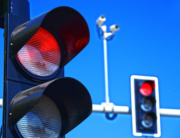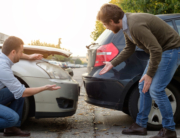Crash test dummies are an iconic part of front-end crash testing but did you ever notice tests only show them in the front seats? Their use has given researchers invaluable data about how human bodies react in different crashes. The data collected from dummies has helped car manufacturers improve the safety features in the front seat, yet little has been done to look at backseat safety.
With ride-share services like Uber and Lyft carrying more backseat passengers, the National Highway Traffic Safety Administration (NHTSA) will now develop backseat safety ratings in cars.
The Lack of Backseat Safety
The NHTSA began its testing and rating standards in 1978 with a five-star rating system for safe cars. However, this rating system was flawed, as it only accounted for safety testing of the front-seat passengers. For most cars, the only safety measure in the back seat is a seat belt.
Another concern for safety is children in back seats, especially in car seats. As front seat design has changed to protect upfront passengers, that same design change has unexpectedly made the backseat more dangerous. The front seats are at risk of collapsing on backseat passengers in a rear-end collision.
Safety features now standard for most front seats are rarely found in back rows. While front seats now include side-impact airbags, full front airbags, and seat belt pre-tensioners, back seats are lucky to have the pre-tensioners.
Crash Testing is About to Improve Backseat Safety
By adding crash test dummies to backseat positions, crash research can now look at the effect of all types of crashes on backseat passengers.
The NHTSA will now evaluate backseat passenger safety with the same five-star rating system it uses for front-seat safety tests. The administration is currently developing the crash rating system and protocol and hopes to have the rating system ready at the end of the year. Vehicles model year 2019 will be the first generation held to the new backseat safety standards.
Improving Backseat Safety is No Easy Task
To achieve a good safety rating, manufacturers may now have to invent new ways to improve front-impact safety and overall backseat safety. However, until newer vehicles are on the market with improved backseat safety standards, there are steps you can take to keep your backseat occupants safe.
State Farm Insurance says the safest place in the back seat is the middle seat, away from crash impact zones. Make sure everyone in the back is wearing a seatbelt and is facing forward for optimal belt placement in a crash. The insurer also reminds parents to choose the right type of restraint — this includes making sure the child is tall enough for the restraint. The Center for Auto Safety cautions parents not to put their children behind occupied front seats due to the risk of seat collapse.
State Farm reminds parents that they can improve backseat safety by driving cautiously and never driving distracted.
For more information on safer driving in Ft. Lauderdale, check out our blog.
 English
English  Español
Español 




